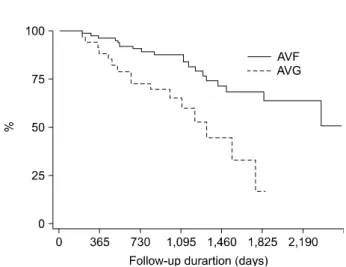DOI:10.5090/kjtcs.2011.44.1.25 ISSN: 2233-601X (Print) ISSN: 2093-6516 (Online)
*Department of Thoracic and Cardiovascular Surgery, CHA Gumi Medical Center, CHA University
**Department of Internal Medicine, CHA Gumi Medical Center, CHA University
***Department of Thoracic and Cardiovascular Surgery, Daegu Veterans Hospital
****Department of Thoracic and Cardiovascular Surgery, Ulsan University Hospital Received: July 13, 2010, Revised: September 23, 2010, Accepted: September 26, 2010
Corresponding author: Sung-Wan Kim, Department of Thoracic and Cardiovascular Surgery, CHA Gumi Medical Center, CHA University, 855, Hyeonggok-dong, Gumi 730-040, Korea
(Tel) 82-54-450-9586 (Fax) 82-54-450-9798 (E-mail) doa1224@dreamwiz.com
C
The Korean Society for Thoracic and Cardiovascular Surgery. 2011. All right reserved.
CC


